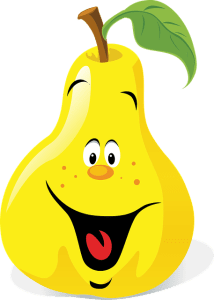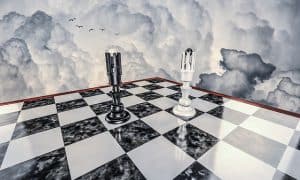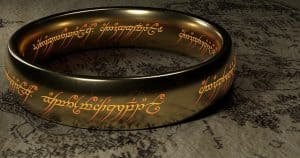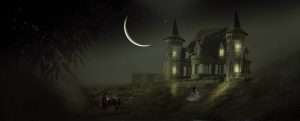Have you ever heard of Lord Byron? One of his most famous poems was Don Juan? It was said that Lord Byron was an alcoholic and that made me think. You know, I don’t know any poet who died of using drugs. Do you? I mean can you imagine what sort of romantic life they must have? Every time staying up before bed. Yes, imagine when their partner, girlfriend or friend with benefits call them to bed. I’m sure their answer is always the same; “Let me finish this one line.”
Alright, no more jokes I promise. Let’s head straight to the elements of storytelling. If you’ve been reading a lot of content about writing and storytelling then perhaps you’ve read some writers say there are 4 elements, maybe 6 elements and maybe even 7 elements to storytelling, but if you’re a poet like myself then I’d have to argue that there are more elements than just 7.
Depending on what sort of story you have in mind especially if you’re thinking like me who tries too much and overthinks how Shakespeare must have thought through some of his works. There are a lot of sceptical people out there wondering about Shakespeare’s work, to be or not to be the truth is that there is still genius in the work, that will remain throughout history. Hypothetically speaking if Mr Shakes were alive today, I wouldn’t mind peer-ing with him on writing, but he’s not and who knows if he has been reborn, then he could possibly be in the cocktails, milkshake business or perhaps even farming pears… Spears are now outdated while Schumachers are always in business…
 Anyhow, since I can’t peer this with Mr Shakes, I will go solo.
Anyhow, since I can’t peer this with Mr Shakes, I will go solo.
 1) Setting
1) Setting
The setting can be placed through the year the story is being written, however, what truly makes the setting is the description. Having the era or the year just written such as it was in the year 1912 when the titanic sank gives the entire story away in just half a sentence especially if the story is about The Titanic. What’s the point of the story if all 6 senses can be, even the 7th sense can be used by the author when writing? Ideally, this important element of storytelling walks the reader through every detail so that they can feel, visualise, see the description of the place where the story is beginning or unfolding along the way. The setting is the most effectively written using description.
Poetry is used in Shakespeare’s Macbeth in the setting of the way the witches describe the weather; fair is foul, and foul is fear hover through the fog and filthy air. These sentences set the mood in the play making the reader feel an emotion of how this story begins.
The setting is also an element of a screenplay.
 2) Characters
2) Characters
In the elements of storytelling characters also is an element for screenplays. Do you know any story without an antagonist? I tell you what, even a non-fiction story has an antagonist, only that antagonist is a demon within the protagonist. Let’s take a look, for example, in Batman: The Dark Knight the antagonist does become ambiguous at some point or even more complex i.e., Harvey Dent who becomes the flawed politician while the Joker tries to challenge the breaking point of “good men.” In the movie Catch me if you can which is based on a true story, the antagonist is the negative force within the protagonist which shows him as a hero outwardly and eventually as he crosses the line it begins to work even more against him.
The character, how complex they are, their fears, pain, anxiety all makes them give the audience or the reader a human connection, as mentioned before Batman, challenge of value and how far will one go to keep the morale of society intact makes the story convincing. One of the most important of all elements of storytelling across plays, screenplays, fiction books, non-fiction books, comics, self-help, how-to book or even a business content writer is all about the character, it’s all about human connection. How convincing and justifiable is the antagonist or protagonist to their actions in the eyes of the audience or reader? In everything we do there is a story or a story we are creating even in our heads even when it isn’t the reality, why should anyone buy the story especially if the world is full of characters? This is why this is one of the most important elements of storytelling.
 3) Plot
3) Plot
This element of storytelling is also an important element for screenplays. The plot is the story, the goal. Have you heard of The Hero’s Journey? If not take a look at this link. Every story according to the Hero’s journey follows 12 steps which create the plot of a story. The protagonist goes on this journey, meets the supporting characters and then is met with a challenge. The protagonist meets the antagonist and doesn’t want to face his/her fears, or he/she does want to face up to the challenge. The protagonist is now having to take the journey, but for him/her to take the journey he/she would need the help of a mentor, then is tested and faces their demons, and a whole lot of events occur bringing the protagonist towards being the hero after dealing with their pains, deepest fears, the darkness within themselves, making it out on the other side with even more force until he/she defeats the real antagonist be it literal or abstract. Does this not remind you of the story of Harry Potter? If you haven’t watched Harry Potter, then maybe Batman, Spiderman, Superman, X-men, The Aviator, etc. That is how the characters and the plot go hand in hand, are the characters developed well enough to be able to withstand, convince the audience or the reader of the plot?
It’s a very meticulous task to ensure that no parts of the final goals are revealed in any way in each step of the hero’s journey until the end, however, in Romeo and Juliet, there were many clues of the pair choosing to die until they finally met their fate which brings us to the next point.
 4) Structure
4) Structure
The structure from all the elements of storytelling thus far is also an element for screenplays. In storytelling depending on whether one is writing a blog post, a short story, a novel, or a children’s book the structure of the story or at least a decent book will have been roughly planned out by the author. Even though this article has the parts of the structure already explained there are further breakdowns of when the author plans to reveal the setup to the plot, a part of the plot, the mid-point of the plot, and the ending of the plot. This leads us to the next point in the elements of storytelling.
 5) Sequence
5) Sequence
Depending on how complex the story is the sequence will follow, ideally, the writer or the author’s aim is to keep the reader onto the story and not lose them, hence, why the author or writer will draw out the sequence to the story and how long it will be in steps until they reveal the final plot. The challenge, the game, the strengthening of the characters along the challenges making the protagonist and antagonist review their parts at different stages where they lose strength or gain strength towards who wins in the end, the final plot. The sequence in storytelling is one of the most important elements of storytelling when drawing out any story even in the case of a screenplay.
 6) Theme/message
6) Theme/message
The theme or the message comes through in any storytelling including business storytelling. What is the point that is being made? Now, I would have to admit that this is the main element of storytelling, to me. Why? Do you still think of that one book you once read? Do you still think of that one movie that stands out from every other? Do you remember the moral of a particular story that a teacher, your parents, or someone else must have told you? Let’s go back to all the childhood movies and storybooks one reads. Isn’t there always a moral to the story?
In screenplays, isn’t there a message to the flick that makes the story memorable and stand out from other flicks? The reviews and ratings speak of that and the audience’s recommendation to others. In my opinion, many stories will provide the overall concept/idea, but how, is what makes it a success, or at least memorable.
 7) Dialogue
7) Dialogue
The dialogue of the story comes across through the description and the use of the 6 senses of the characters.
The dialogue in the elements of storytelling for me takes the shape of the other 4 elements as well.
- Narrative: How the story is being written out, i.e., first, second or third person.
- Inner Monologue: The use of words such as wonder, thought compared to the dialogue itself which uses the words said, uttered, exclaimed, however, with words such “said,” “exclaimed” or “whispered,” etc. I have been taught by other writers that this distracts the reader but in the case of a few, it reinforces the tone. In my experience there is only so much one can use in terms of the words wonder, said, uttered, exclaimed that readers can understand without using higher English which would just end up bamboozling the reader. This depends entirely on the writer/author if they believe certain tags are better left out to avoid distracting the reader.
- Action: What are the roles of the characters in the goal and plot of the story? These are often used with descriptive words and step by step actions which leads us to the next point.
- Description: While Harry walked cautiously, he heard a strange sound coming from the forest, he could hear the leaves crunch against something, it was coming closer and closer towards him until he heard a snap. He saw a massive leafy bush shake as if something was about to come out and eat him. (By the way that was my own made-up part when I think of the forest with you know who in there in the story of Harry Potter).
 8) Conflict and Resolution
8) Conflict and Resolution
Let’s say a writer is writing a blog post, a poet a poem, an author a story overall there is a story in it, no matter how short it is and what little has been revealed. Now, there will be nothing to tell if the crux (not horcrux) of the story is sitting hanging open on both sides, the story has no substance, for there to be a resolution or at least trying to get to a resolution within storytelling there has to be a conflict. The conflict can be just one or two things but there has to be a conflict and that is an external conflict and/or an internal conflict. The conflict is with the antagonist be it one’s innermost antagonist, the external antagonist or both. What is the build-up to this conflict that glues the audience to the book or the screenplay? Note that even screenplays have conflict and resolution as an element of storytelling.
Over the years we have read many books, or even seen movies with very interesting endings/resolutions, such as the tragic hero in the Titanic, some which leave the audience wondering, or some which leave the audience happy, and others that leave the audience hanging.
 9) Want and need
9) Want and need
This is also an element of screenplay, but I can truly say that it helps any form of story even a recipe book. What does one require to make the product, what does the protagonist need to beat his/her opponent, example, The Hunger Games, what would a writer or author apt their characters with, to defeat the challenges, obstacles or the antagonist to bring forth the resolution or new beginning?
 10) Craft
10) Craft
Another one that is very important from most elements in storytelling. Craft is what makes one author or writer stand out from other writers or authors. There was something about that story that makes or breaks a business, blog post, a novel, a piece of content. You know, recently someone said, “You have to be careful what you say.” I mean the world has become politically so correct that divine intervention can’t even come through, true friends like the good old days and what one did then to what one does just because we’re “adults” now that changes everything. Like how Ryan Reynolds described once, that back in the school days, liking a girl and following her on a bus was okay but when you grow up it’s called stalking (yah, he’s so right, even if you’re trying to get her attention just that one time, please don’t get any ideas from this ladies and gents). Crafting a story can make the characters look great and then boom even the audience gets a shock of what was their perceived truth. The craft of an author’s, writer’s or even poet’s work is a constant creation in the making of a piece of excellence, it is only when the author, poet or writer says, “That’s it, I won’t think of perfecting it anymore,” is what decides the finishing line.
It was in this article that I found the last three elements of storytelling.
 11) Melody
11) Melody
 12) Décor
12) Décor
 13) Spectacle
13) Spectacle
Have a look at the article in the link above which goes into melody, décor and spectacle to complete the study on the subject of elements of storytelling.
Hey, maybe in the next article I can let you hear more on my song tortilla, oh, I think I will reconsider that because I don’t think you like wrap!
You can also have a look at the Elements of storytelling short video.
Drop us a comment below and follow us or share this article on Instagram, Tiktok, Facebook.
In the next article, we will rather look at it is no longer a pitch it’s a sales offer.
Yours sincerely,
T. Dench Patel









